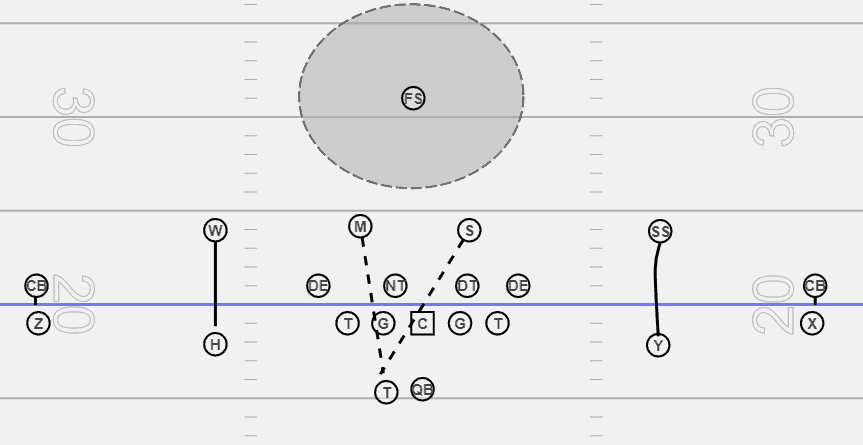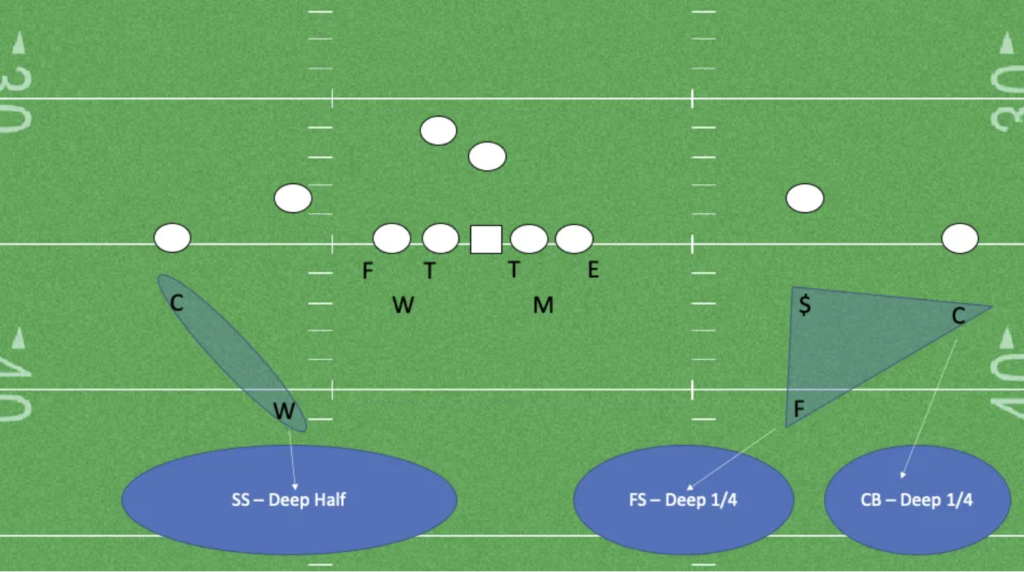Effective Defensive Strategies in Modern NFL

In the modern NFL, where offensive schemes are more sophisticated than ever, defensive coordinators have had to evolve rapidly. With the passing game taking center stage, defensive strategies must adapt.
We explore some of the most effective defensive strategies today, focusing on pattern matching, split field coverages, and their practical applications. Whether you’re a coach, player, or fan, understanding these strategies can offer valuable insights into how defenses counter high-powered offenses.
Pattern Matching: The Key to Defensive Flexibility

Pattern matching has become a cornerstone of modern defensive schemes. This approach allows defenders to adjust their coverage based on the offensive routes they face, rather than sticking strictly to zone or man-to-man coverage.
Here’s a breakdown of how pattern matching works:
- Versatility in Coverage: Defenders are not assigned to specific zones but instead adjust their coverage based on the offensive routes. This means if an offensive player runs a particular route, the corresponding defender will “match” that route, often switching from a zone to man coverage as needed.
- Real-Time Adjustments: Pattern matching allows defenses to adapt in real-time, making it harder for quarterbacks to predict the coverage. This can confuse even the most skilled signal-callers, leading to mistakes and stalled drives.
Example: Quarters Coverage
One of the most popular pattern-matching defenses is quarters coverage, often mistaken for cover 4. Quarters coverage divides the field into four zones, with each defensive back responsible for a quarter of the field. Here’s how it works:
- Back Seven: The defense uses pattern match principles across the back seven players (two safeties and five defensive backs) to create a flexible coverage scheme.
- Field Division: The field is divided into two parts, with the quarters system covering both sides. The defense often aligns with two safeties high, providing deep coverage while the corners and linebackers handle intermediate and short routes.
This system excels at adapting to various NFL offensive formations and route combinations, making it a valuable tool in a defensive coordinator’s arsenal.
Split Field Coverages: Dividing and Conquering

Split field coverages are another advanced defensive strategy used to combat modern offenses. This approach involves dividing the field into two distinct zones and applying different coverages to each side.
Here’s a look at how this strategy works:
- Two-Sided Coverage: The defense applies one type of coverage to the strong side (the side with more offensive players) and a different coverage to the weak side. This allows the defense to tailor its approach based on the offensive formation and threat level.
- Common Variations: One popular split field coverage is the Fangio 6, which combines cover 4 on one side with cover 2 on the other. This provides robust protection against deep routes while maintaining strong coverage underneath.
Example: Fangio 6
The Fangio 6 coverage, named after defensive guru Vic Fangio, is a prime example of split-field coverage in action. It works as follows:
- Cover 4: On the strong side of the formation, the defense plays cover 4, which uses four defenders to cover deep routes and provides robust protection against vertical threats.
- Cover 2: On the weak side, the defense plays cover 2, which focuses on two deep zones and provides support against shorter, intermediate routes.
This strategy effectively balances deep and shallow coverage, making it difficult for offenses to find open receivers.
Adapting to Offensive Formations
Modern defenses must be adaptable, especially when facing diverse offensive formations. Here’s how some common formations are countered:
- Trips Formation: When the offense lines up with three receivers on one side, defenses often use a “poach” strategy. This involves assigning one corner to the solo side and adjusting the safety and other defenders to handle the three receivers on the strong side.
- Five Wide Receivers: Against five-wide formations, defenses may use a combination of man coverage and zone principles. For example, the defense might play man coverage on the solo side while applying a zone or combination coverage on the other side.
Example: Trips Formation Poach
In a trip formation, the defense might use the following approach:
- Solo Side Corner: Lock the corner onto the solo receiver with a “Meg” call, ensuring tight coverage.
- Strong Side Coverage: Adjust the safety and other defenders to handle the three receivers, with the safety providing help against crossing routes and the nickel back covering the running back.
This flexibility allows defenses to handle a wide range of offensive strategies effectively.
The Future of Defensive Strategies

As offenses continue to evolve, so too will defensive strategies. Complexity in defensive schemes is likely to increase, with coordinators constantly adapting to new offensive innovations. However, the fundamental principles of pattern matching and split field coverages will remain integral to defensive success.
In the ever-changing landscape of the NFL, staying ahead of offensive trends and continuously refining defensive strategies is crucial. For fans and analysts, understanding these evolving tactics provides a deeper appreciation of the game and the chess match between offensive and defensive minds.
Effective defensive strategies in the NFL are a blend of adaptability, innovation, and execution. By leveraging pattern matching, split field coverages, and flexible responses to various offensive formations, defenses can counter even the most potent offensive schemes.
As we look ahead, staying informed about these strategies not only enhances our understanding of the game but also adds to the excitement of watching elite defenses in action.
Remember, whether you’re setting your Vegas lines or analyzing game film, the evolution of defensive strategies offers endless intrigue and insight into the dynamic world of NFL football.





